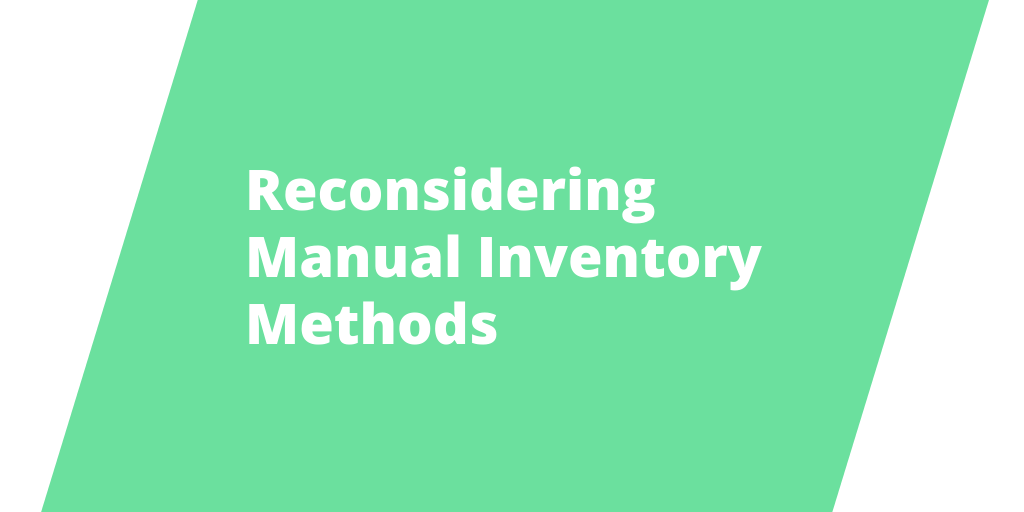From Bid to Build: How Scaffolding Software Supports Every Step of Scaffolding Projects
In today’s construction landscape, digital tools are reshaping how scaffolding companies operate—from the initial bid to project closeout. As the… Read More

Previously, we touched on the risks of using Excel spreadsheets to manage your scaffolding business. While they’re widely used in the construction industry, the inefficiencies they bring could be detrimental to your overall profitability.
This time, we’ll dive deeper into how manual inventory tracking in general might be damaging your scaffolding business.
Continue reading to learn about the harm done by manual inventory tracking, and the benefits of switching to inventory management software.
Manual inventory tracking refers to the practice of counting scaffolding materials and gear by hand and includes manually writing down the counted inventory on nonautomated platforms such as paper forms or spreadsheets.
It’s the most traditional approach and remains the most popular method of managing scaffolding assets, if only because there’s no initial cost or effort to it. After all, the cheapest system is no system at all—but the consequences of this path of least resistance quickly grow in cost, especially as your business grows.
To better understand this issue, let’s explore the five ways manual inventory tracking is harming your scaffolding business.
Manual inventory tracking causes massive asset wastage.
With manual tracking, there’s always a discrepancy between assumed inventory count and real-time count because it’s susceptible to human error. This inaccuracy leads to inefficient inventory use, leaving excess materials to rust in the yard, generating no return on investment, when they could be put to good use. This is wasted potential for an asset-based business like a scaffolding contractor, especially when materials are so expensive.
Besides that, materials could also go missing. It’s difficult to keep track of everything that comes back from projects or rentals, which means unreturned or damaged materials could be left undocumented. This affects your business profitability without you even realizing it, until the eventual, massive asset write-down finally happens during an audit.
Manually counting inventory leads to lower returns and higher project costs, mainly due to project changes.
When you track inventory manually, it’s difficult to plan projects accurately because you’re never sure what equipment you have. Halfway through a project, the team might start to realize that they lack equipment or need to change the designs entirely.
This increases your design costs, freight costs, and transportation costs as you move back and forth between sites. You’ll also need to bear higher labor costs as your project takes longer to complete and workers waste time chasing down equipment you may or may not actually have. Without accurate planning, you may buy or rent more materials than you need, burdening you with greater expenses.
Speaking of inaccurate planning, manual tracking is also an inefficient use of time.
Team members not only spend long hours counting (and recounting) equipment in the yard and across sites, but also take longer to complete the project as it requires redesigns when materials are not on hand as planned. Jobs can also be postponed while waiting for new shipments or for equipment to free up. As manual inventory is not automated, managers need to perform the time-consuming task of consolidating data across locations to create accurate billings.
Wasted time is wasted opportunity in a scaffolding business. Overall, these problems affect your business productivity and, ultimately, profitability as it limits the amount of projects you can take on.
As the name suggests, manual inventory tracking means doing everything manually, which can be exhausting for workers.
To avoid inaccuracies, workers need to put in extra effort at counting and checking the materials. When project changes are made, the team needs to redesign, reship, and rework the scaffold. That’s before accounting for the additional clerical overhead of correcting reports and explaining discrepancies and delays to the customer.
This negatively impacts a scaffolding business because it not only decreases the project productivity, but also compromises the project quality. This is because workers are swamped with menial tasks instead of focusing on what they do best – ensuring safe, efficient access for your customers!
As explained above, manual inventory tracking leads to inefficiency and lack of productivity, and even compromises project quality. Plus, those delays mentioned before? Clients will notice those, and as concerns mount, they may consider other contractors on future projects.
With manual tracking, it’s difficult to provide an accurate, swift service to customers. Providing accurate quotations or design details during the bidding stage or amidst the project will take a long time because you need to check everything manually each time. Manual tracking also increases the risk of project changes and raises costs for customers.
These inefficiencies might cause your company to lose business opportunities. While issues such as project changes and delayed response might be the norm in the scaffolding industry, it’s wise to provide the best service and quality possible in order to stand out from competitors and keep your business afloat.
Even if customers forgive these disruptions, you know how painful it can be to turn away business if you’ve ever run out of equipment during a busy season. By properly tracking inventory, you can ensure true utilization is taking place—any excess is quickly redeployed to help capture additional work.
(Of course, it’s even better to estimate accurately and never send excess equipment to begin with. A specialized scaffold design program can help with that.)
Inventory tracking is one of the most crucial metrics in running a profitable scaffolding business. To track and manage your inventory better, you should consider a scaffolding-specific inventory management program. Here are some benefits of adopting such a program:
Our clients have achieved these benefits through Avontus Quantify®. It’s the fastest, easiest way to transform your scaffolding inventory management. Ready to take your business to new heights?